Sustainability Consciousness Research Trends: A Bibliometric Analysis
Abstract
1. Introduction
2. Materials and Methods
2.1. Systematic Literature Review (SLR)
2.1.1. Question Formulation
- RQ1: In which areas is SC researched in the literature?
- RQ2: How can SC be assessed and measured?
- RQ3: Is there a relationship between SC and SDGs?
- RQ4: What is SC’s role in achieving the SDGs?
- RQ5: What is the publication frequency, topic distribution, and the main keywords that are emerging in the SC literature?
2.1.2. Study Location
2.1.3. Study Selection and Evaluation
2.1.4. Analysis and Synthesis
- SC through ESD;
- SC of consumers;
- SC in business;
- SC measurement tool.
3. Results and Discussion
3.1. Time, Citation, and Publishers
3.2. Countries of Origin of Articles
3.3. Citation Analysis
3.3.1. Citation Analyses of Sources
3.3.2. Citation Analyses of Documents
3.3.3. Citation Analyses of Authors
3.4. Co-Citation Analysis
3.4.1. Co-Citation Analyses of Sources
3.4.2. Co-Citation Analyses of References
3.4.3. Co-Citation Analyses of Authors
3.5. Co-Authorship Analysis
3.5.1. Co-Authorship Analyses of Authors
3.5.2. Co-Authorship Analyses of Organizations
3.5.3. Co-Authorship Analyses of Countries
| Ref. | Key Objective | Method | Findings | |||
|---|---|---|---|---|---|---|
| SCQ Scales | Research Design | Country | Sample and Frequency | |||
| [11] | It explores students’ SC and discusses ESD policy implications. | SCQ-S | Quantitative | Taiwan, Sweden | 1200 students | It shows that there are significant differences in terms of SC between the two samples. |
| [20] | To analyze the impact of the ESD-focused RADEC learning model on students’ SC. | SCQ-S | Quantitative | Indonesia | 150 students | ESD integrated with the RADEC learning model helps students achieve SC. |
| [26] | It aims to determine the status and effectiveness of ESD by using students’ and teachers’ sustainability perceptions. | SCQ-L | Quantitative | Pakistan | 1915 students; 120 teachers | The prevalence of ESD in Pakistan is low and teachers have inadequate knowledge on sustainability. |
| [27] | It aims to investigate how ESD applications and SC are linked. | SCQ-S | Quantitative | Malaysia | 2678 students; 1013 teachers | Significant relationships were found between ESD approaches and SD. |
| [28] | To reveal the effects of ESD in terms of improving SC. | Michalos et al. (2012) | Quantitative | Sweden | 638 students | There is a difference between students with ESD and those who are not educated. |
| [57] | Action research has been used to improve the SCs of candidate teachers through query-based learning. | Michalos et al. (2015) | Mixed | Pakistan | 27 students | The data indicate that research-based discussions enhance the SC of teacher candidates. |
| [36] | It reveals the SC of physical education teachers. | SCQ-S | Quantitative | Spain | 203 teachers | It shows that physical education teachers have a high awareness of SD. |
| [38] | Evaluating SC of primary school Students. | SCQ-S | Quantitative | Spain | 151 students | It revealed positive relationships between SC and sustainability attitudes. |
| [52] | To explore the significance of SC in the process of transitioning to puberty. | Michalos et al. (2011) | Quantitative | Sweden | 2413 students | It clearly shows that students’ SC decreases during adolescence. |
| [54] | Analyzing the effectiveness of online sustainability education in ESP classrooms. | SCQ-S | Quantitative | Ukraine | 33 students | It has shown an increase in their knowledge of SD issues and more responsible environmental behavior. |
| [55] | The paper examines a service-learning initiative that combines life cycle nutrition and developmental psychology courses, with a focus on intergenerational and multidisciplinary collaboration. | Mixed | USA | 21 students | The SC of students attending the course has increased throughout the duration of the period. | |
| [56] | It aims to understand psychosomatic mechanisms such as mindfulness and SC, which have a potential impact in promoting sustainable lifestyles. | SCQ-S | Quantitative | India | 157 students | It has a positive role in developing SC. |
| [30] | To draw attention to the SC of teacher candidates for SD. | Michalos et al. (2015) | Quantitative | Pakistan | 361 students | The study reports that the SCs of Pakistani teacher candidates are much lower than the SCs of Swedish high school students. |
| [58] | It focuses on filling the gap in academic research and critical thinking on the impacts of sustainability education initiatives in Taiwan. | SCQ-L | Quantitative | Taiwan | 1741 students | Green schools in Taiwan have no influence on students’ SC. |
| [59] | Exploring the gender difference between boys’ and girls’ SC and extends previous studies. | SCQ-L | Quantitative | Sweden | 2413 students | Students SCs differ by gender and become even larger in ESD-focused schools. |
| [60] | It measures students’ SC competency outcomes through the ESD framework. | SCQ-S | Quantitative | Malaysia | 975 students; 458 academicians | Action-based ESD has demonstrated its potential to be successful. |
| [61] | It aims to provide data about students’ self-perceptions regarding SC. | Leeming and Dwyer (1995) | Mixed | Hong Kong | 787 students | Although there was an increase in students’ SC perceptions, knowledge, and behavioral aspects, they showed low participation. |
| [62] | In business education, it aims to include sustainability principles in the curriculum. | Qualitative | USA | This article discusses various approaches to integrating sustainability into curriculum design. | ||
| [63] | Proposing sustainability-focused foresight training as a transformative intervention. | Quantitative | Taiwan | 223 students | Students hold promise as potential change agents for creating alternative environmental values and sustainable behaviors. | |
| [64] | To test structural connections between curriculum experiences, sustainable agency beliefs, and students’ SC. | Quantitative | China | 1804 students | Curriculum emphasis has an impact on students’ SC. | |
| [65] | To examine the connection between students’ environmental knowledge and behavior. | Quantitative | Hungary | 325 students | SC is mediated by environmental attitudes. | |
| [66] | To explore the potential of the SCQ scale to evaluate different educational interventions. | SCQ-S | Mixed | Spain | 68 adults | Pre-intervention scores indicate high SC and a positive impact on sustainability behavior after the intervention. |
| [67] | It aims to evaluate the impact of sustainability pedagogies on Students’ SC in online education environments. | Michalos et al. (2015) | Mixed | Pakistan | 49 students | It shows that teacher candidates improve their SC in online education environments during the COVID-19 epidemic. |
| [68] | It explores the role of specific sustainability education pedagogies in developing SC of pre-service teachers. | SCQ-L | Mixed | Greece | 77 students | While it was concluded that concept maps were the most effective factors affecting the learning of teacher candidates, the general principles of teaching were also determined. |
| [69] | It evaluates the impact of ESD and SC on higher education students in Qatar. | SCQ-S | Quantitative | Qatar | 212 students | It has been reported that more than 80% of students have an adequate understanding of sustainability-related information. |
| [70] | It aims to investigate the Integration of the ESD Program in Nursing. | SCQ-S | Quantitative | Egypt, Saudi Arabia | 160 nurses | A difference was found in the SC of nurses before and after the intervention. |
| [71] | Students’ SC level was investigated. | SCQ-S | Quantitative | India | 205 students | It has been revealed that sustainability attitude affects sustainability behavior more than sustainability knowledge. |
| [72] | It aims to assess its students’ knowledge of the SDGs. | Quantitative | UAE | 112 students | The results of students who received and did not receive the ESD awareness program showed differences. | |
| Ref | Key Objective | Method | Findings | |||
|---|---|---|---|---|---|---|
| SCQ Scales | Research Design | Country | Sample and Frequency | |||
| [5] | To examine the relationships between consumers’ SC and behavioral intentions towards environmentally friendly products and its impact on SDGs endorsement. | Quantitative | India | 410 consumers | SC of consumers influenced Consumers’ SDGs-endorsing behavioral intentions. | |
| [73] | It aims to discover how responsible consumers’ motivations for choosing green products should be taken into consideration. | Mixed | Spain-Latin America-Africa | 30 website analysis and 141 consumers | It provides information for companies that want to align their eco-innovation strategies with the motivations of green consumers. | |
| [75] | To examine the perception of consumers towards SC and the extent to which they incorporate it into their practices of sustainable consumption. | Qualitative | Kyrgyzstan | 50 consumers | The results show that participants have very little knowledge about sustainability | |
| [76] | To examine the factors that determine consumer characteristics and marketing perspective to stimulate consumption behavior. | Quantitative | England-USA-China | 711 consumers | Differences have emerged between the three countries, indicating a positive impact on behavioral intention towards sustainable apparel products. | |
| [77] | It discusses the role of mobile applications developed in preventing food waste. | Quantitative | Turkey | 439 consumers | It shows that people who care about sustainability care about food waste and turn it into sustainable purchasing behavior. | |
| [78] | Sustainable purchase intentions for minimalists are to create a multidimensional sustainability profile that includes human values and sustainable consumption consciousness. | Quantitative | Germany | 1458 consumers | Minimalists have a SC that is ecological and economical. | |
| [79] | Investigating the true sensitivity of millennials to sustainability when purchasing luxury goods. | 32 items scale | Quantitative | China-USA-Japan-France-Germany-Brazil | 3217 luxury consumers | Generation Y does not stand out as being more sensitive about sustainability when purchasing. |
| [80] | It aims to understand customers regarding sustainability and purchasing by defining customer market segments. | Shen et al. 2012 | Quantitative | USA | 754 consumers | Participants demonstrated significant differences in consumer characteristics related to both sustainability-related factors and shopping characteristics. |
| [81] | Examines the acceptance of insect-based foods by consumers in Germany. | SCQ-L | Quantitative | German | 516 consumers | Despite the participants’ strong SC, it was revealed that SC was not a significant determinant of their willingness to consume insects. |
| [82] | Explains why and how mindfulness affects SC. | Quantitative | India | 726 consumers | There is a significant positive relationship between mindfulness and SC. | |
| [83] | To evaluate the effectiveness of teachers and parents on children’s SCs. | Mixed | Australia | 300 students, parents, and teachers | At the end of the project, the processes that cause changes in children’s SCs will be evaluated. | |
| Ref | Key Objective | Method | Findings | |||
|---|---|---|---|---|---|---|
| SCQ Scales | Research Design | Country | Sample and Frequency | |||
| [84] | To determine the opinions of craft entrepreneurs regarding SC in their businesses. | Qualitative | New Zealand | 8 entrepreneurs | In a sustainable business model, SC is a driving motivation and an important starting point. | |
| [85] | It includes the firm’s Knowledge-Based View to examine knowledge management in the context of sustainable practices. | Qualitative | Vietnam | 5 stakeholders | The SC dimension, depicted by their attitudes towards sustainability-based principles, is aligned with the “information needs of production”. | |
| [86] | It aims to develop a sustainable BIM-based EIA for infrastructure projects. | Qualitative | Netherlands | Case | The design team of the framework has been shown to increase SC. | |
| [87] | Proving that environmental innovation is the key to sustainability in the luxury yachting industry. | Qualitative | Poland | Case | It emphasizes that everyone has a role (awareness) in being aware of the challenges faced in terms of sustainability and ensuring sustainability. | |
| [88] | To investigate composite indicators linked to agricultural sustainable supply chain management (ASSCM). | Mixed | China | 8 experts | Environmental legislation, regulation, licensing, and government subsidies have been found to be the main drivers of ASSCM. | |
| Ref | Key Objective | Method | Findings | |||
|---|---|---|---|---|---|---|
| SCQ Scales | Research Design | Country | Sample and Frequency | |||
| [25] | The effect of the ESD approach is compared to that of students in regular schools. | SCQ-L | Quantitative | Sweden | 1773 students | Schools with ESD profiles have shown that students have a small positive impact on SC. |
| [29] | To measure the extent to which education can be labeled as holistic and pluralistic from ESD. | Olsson et al. (2015) | Quantitative | Sweden | 2413 students | ESD significantly influences student outcomes, especially regarding SC. |
| [35] | The aim of the study is to introduce the concept of SC and develop the SCQ scale. | Quantitative | Sweden | 638 students | The SCQ scale was developed in two versions: long version (SCQ-L) and short (SCQ-S). | |
| [37] | Developed a Japanese version of the SCQ and examined the reliability and validity of the questionnaire. | SCQ-S | Quantitative | Japan | 1268 adults | Showed that the Japanese version of the SCQ consists of two single-level factors: sustainability knowledge/attitude and sustainability behavior. |
| [89] | Extensive research has been conducted on the factors that motivate consumers to engage in sustainable consumption behavior. | 19 items Consumer SCQ | Quantitative | Portugal | 174 consumers | The suggested structure of the SC consists of five dimensions. Sense of Retribution; Access to Information; Labeling and Peer Pressure; Health Issues; and Crisis Scenario |
4. Conclusions
Author Contributions
Funding
Institutional Review Board Statement
Informed Consent Statement
Data Availability Statement
Conflicts of Interest
References
- Brundtland, G.H.; Khalid, M. Our Common Future, World Commission on Environment and Development Report; Oxford University Press: Oxford, UK, 1987; ISBN 978-0-19-282080-8. [Google Scholar]
- White, M.A. Sustainability: I Know It When I See It. Ecol. Econ. 2013, 86, 213–217. [Google Scholar] [CrossRef]
- United Nations Sustainable Development Goals: 17 Goals to Transform Our World. Available online: https://www.un.org/en/exhibits/page/sdgs-17-goals-transform-world (accessed on 2 October 2023).
- Hák, T.; Janoušková, S.; Moldan, B. Sustainable Development Goals: A Need for Relevant Indicators. Ecol. Indic. 2016, 60, 565–573. [Google Scholar] [CrossRef]
- Kautish, P.; Khare, A.; Sharma, R. Values, Sustainability Consciousness and Intentions for SDG Endorsement. Mark. Intell. Plan. 2020, 38, 921–939. [Google Scholar] [CrossRef]
- Mulyadi, D.; Ali, M.; Ropo, E.; Dewi, L. Correlational Study: Teacher Perceptions and The Implementation of Education for Sustainable Development Competency for Junior High School Teachers. J. Educ. Technol. 2023, 7, 299–307. [Google Scholar] [CrossRef]
- Nazar, R.; Chaudhry, I.S.; Ali, S.; Faheem, M. Role of Quality Education for Sustainable Development Goals (SDGS). Int. J. Soc. Sci. 2018, 4, 486–501. [Google Scholar] [CrossRef]
- Klein, A. Sustainable Development Goals Best Practices—One Year In. Available online: http://csr-asia.com/newsletter-sustainable-development-goals-best-practices-one-year-in (accessed on 12 August 2023).
- United Nations Transforming Our World: The 2030 Agenda for Sustainable Development|Department of Economic and Social Affairs. Available online: https://sdgs.un.org/2030agenda (accessed on 2 October 2023).
- Matinaro, V.; Liu, Y.; Lee, T.-R.; Poesche, J. Extracting Key Factors for Sustainable Development of Enterprises: Case Study of SMEs in Taiwan. J. Clean. Prod. 2019, 209, 1152–1169. [Google Scholar] [CrossRef]
- Berglund, T.; Gericke, N.; Boeve-de Pauw, J.; Olsson, D.; Chang, T.-C. A Cross-Cultural Comparative Study of Sustainability Consciousness between Students in Taiwan and Sweden. Env. Dev. Sustain. 2020, 22, 6287–6313. [Google Scholar] [CrossRef]
- García-Sánchez, I.-M.; García-Sánchez, A. Corporate Social Responsibility during COVID-19 Pandemic. J. Open Innov. Technol. Mark. Complex. 2020, 6, 126. [Google Scholar] [CrossRef]
- Al-Naqbi, A.K.; Alshannag, Q. The Status of Education for Sustainable Development and Sustainability Knowledge, Attitudes, and Behaviors of UAE University Students. Int. J. Sustain. High. Educ. 2018, 19, 566–588. [Google Scholar] [CrossRef]
- Wang, Y.; Sun, M.; Yang, X.; Yuan, X. Public Awareness and Willingness to Pay for Tackling Smog Pollution in China: A Case Study. J. Clean. Prod. 2016, 112, 1627–1634. [Google Scholar] [CrossRef]
- Ali, A.; Murphy, H.C.; Nadkarni, S. Hospitality Students’ Perceptions of Digital Tools for Learning and Sustainable Development. J. Hosp. Leis. Sport Tour. Educ. 2014, 15, 1–10. [Google Scholar] [CrossRef]
- Anderson, A.; Strecker, M. Sustainable Development: A Case for Education. Environ. Sci. Policy Sustain. Dev. 2012, 54, 3–16. [Google Scholar] [CrossRef]
- Dannenberg, S.; Grapentin, T. Education for Sustainable Development-Learning for Transformation. The Example of Germany. J. Futures Stud. 2016, 20, 7–20. [Google Scholar]
- Karpan, I.; Chernikova, N.; Motuz, T.; Bratanich, B.; Lysokolenko, T. Conceptual Principles of Education for Sustainable Development. Eur. J. Sustain. Dev. 2020, 9, 99. [Google Scholar] [CrossRef]
- Agbedahin, A.V. Sustainable Development, Education for Sustainable Development, and the 2030 Agenda for Sustainable Development: Emergence, Efficacy, Eminence, and Future. Sustain. Dev. 2019, 27, 669–680. [Google Scholar] [CrossRef]
- Lestari, H.; Ali, M.; Sopandi, W.; Wulan, A.R.; Rahmawati, I. The Impact of the RADEC Learning Model Oriented ESD on Students’ Sustainability Consciousness in Elementary School. Pegem J. Educ. Instr. 2022, 12, 113–122. [Google Scholar]
- Kagawa, F. Dissonance in Students’ Perceptions of Sustainable Development and Sustainability: Implications for Curriculum Change. Int. J. Sustain. High. Educ. 2007, 8, 317–338. [Google Scholar] [CrossRef]
- Leal Filho, W.; Mifsud, M.; Pace, P. (Eds.) Handbook of Lifelong Learning for Sustainable Development; World Sustainability Series; World Sustainability Series; Springer International Publishing: Cham, Switzerland, 2018; ISBN 978-3-319-63533-0. [Google Scholar]
- Yuniarti, Y.S.; Hasan, R.; Ali, M. Competencies of Education for Sustainable Development Related to Mathematics Education in Senior High School. J. Phys. Conf. Ser. 2019, 1179, 012075. [Google Scholar] [CrossRef]
- Nousheen, A.; Yousuf Zai, S.A.; Waseem, M.; Khan, S.A. Education for Sustainable Development (ESD): Effects of Sustainability Education on Pre-Service Teachers’ Attitude towards Sustainable Development (SD). J. Clean. Prod. 2020, 250, 119537. [Google Scholar] [CrossRef]
- Olsson, D.; Gericke, N.; Chang Rundgren, S.-N. The Effect of Implementation of Education for Sustainable Development in Swedish Compulsory Schools—Assessing Pupils’ Sustainability Consciousness. Environ. Educ. Res. 2016, 22, 176–202. [Google Scholar] [CrossRef]
- Saqib, Z.A.; Zhang, Q.; Ou, J.; Saqib, K.A.; Majeed, S.; Razzaq, A. Education for Sustainable Development in Pakistani Higher Education Institutions: An Exploratory Study of Students’ and Teachers’ Perceptions. Int. J. Sustain. High. Educ. 2020, 21, 1249–1267. [Google Scholar] [CrossRef]
- Saleem, A.; Aslam, S.; Sang, G.; Dare, P.S.; Zhang, T. Education for Sustainable Development and Sustainability Consciousness: Evidence from Malaysian Universities. Int. J. Sustain. High. Educ. 2022, 24, 193–211. [Google Scholar] [CrossRef]
- Berglund, T.; Gericke, N.; Chang-Rundgren, S.-N. The Implementation of Education for Sustainable Development in Sweden: Investigating the Sustainability Consciousness among Upper Secondary Students. Res. Sci. Technol. Educ. 2014, 32, 318–339. [Google Scholar] [CrossRef]
- Pauw, J.B.; Gericke, N.; Olsson, D.; Berglund, T. The Effectiveness of Education for Sustainable Development. Sustainability 2015, 7, 15693–15717. [Google Scholar] [CrossRef]
- Kalsoom, Q.; Khanam, A.; Quraishi, U. Sustainability Consciousness of Pre-Service Teachers in Pakistan. Int. J. Sustain. High. Educ. 2017, 18, 1090–1107. [Google Scholar] [CrossRef]
- Doğan, M. Bilincin Doğasına Yönelik Beş Temel Yaklaşımın Bir Değerlendirmesi. MetaZihin Yapay Zeka Ve Zihin Felsefesi Dergis 2018, 1, 21–55. [Google Scholar]
- Velmans, M. When Perception Becomes Conscious. Br. J. Psychol. 1999, 90, 543–566. [Google Scholar] [CrossRef]
- Velmans, P.M. How to Define Consciousness—And How Not to Define Consciousness. Available online: https://web-archive.southampton.ac.uk/cogprints.org/6453/index.html (accessed on 14 October 2023).
- Yüksel, Y.; Yildiz, B. Sürdürülebilir Bilinç Ölçeği’nin Türkçe’ye Uyarlanması. EJE 2019, 3, 16–36. [Google Scholar] [CrossRef][Green Version]
- Gericke, N.; Boeve-de Pauw, J.; Berglund, T.; Olsson, D. The Sustainability Consciousness Questionnaire: The Theoretical Development and Empirical Validation of an Evaluation Instrument for Stakeholders Working with Sustainable Development. Sustain. Dev. 2019, 27, 35–49. [Google Scholar] [CrossRef]
- Baena-Morales, S.; Ferriz-Valero, A.; Campillo-Sánchez, J.; González-Víllora, S. Sustainability Awareness of In-Service Physical Education Teachers. Educ. Sci. 2021, 11, 798. [Google Scholar] [CrossRef]
- Ogishima, H.; Ito, A.; Kajimura, S.; Himichi, T. Validity and Reliability of the Japanese Version of the Sustainability Consciousness Questionnaire. Front. Psychol. 2023, 14, 1130550. [Google Scholar] [CrossRef] [PubMed]
- Marcos-Merino, J.M.; Corbacho-Cuello, I.; Hernández-Barco, M. Analysis of Sustainability Knowingness, Attitudes and Behavior of a Spanish Pre-Service Primary Teachers Sample. Sustainability 2020, 12, 7445. [Google Scholar] [CrossRef]
- Wals, A.E.J.; Jickling, B. “Sustainability” in Higher Education: From Doublethink and Newspeak to Critical Thinking and Meaningful Learning. Int. J. Sustain. High. Educ. 2002, 3, 221–232. [Google Scholar] [CrossRef]
- UNESCO Sustainable Development Begins with Education, How Education Can Contribuate to the Proposed Post-2015 Goals. Available online: https://en.unesco.org/gem-report/sustainable-development-begins-education (accessed on 3 October 2023).
- Lozano, R.; Barreiro-Gen, M. Civil Society Organisations as Agents for Societal Change: Football Clubs’ Engagement with Sustainability. Corp. Soc. Responsib. Environ. Manag. 2023, 30, 820–828. [Google Scholar] [CrossRef]
- Denyer, D.; Tranfield, D. Producing a Systematic Review. In The Sage Handbook of Organizational Research Methods; Sage Publications Ltd.: Thousand Oaks, CA, USA, 2009; pp. 671–689. ISBN 978-1-4129-3118-2. [Google Scholar]
- Tranfield, D.; Denyer, D.; Smart, P. Towards a Methodology for Developing Evidence-Informed Management Knowledge by Means of Systematic Review. Br. J. Manag. 2003, 14, 207–222. [Google Scholar] [CrossRef]
- Cooper, H. Research Synthesis and Meta-Analysis: A Step-by-Step Approach; SAGE Publications: Thousand Oaks, CA, USA, 2015; ISBN 978-1-4833-4705-9. [Google Scholar]
- Rousseau, D.M.; Manning, J.; Denyer, D. Evidence in Management and Organizational Science: Assembling the Field’s Full Weight of Scientific Knowledge Through Syntheses. Acad. Manag. Ann. 2008, 2, 475–515. [Google Scholar] [CrossRef]
- Callahan, J.L. Writing Literature Reviews: A Reprise and Update. Hum. Resour. Dev. Rev. 2014, 13, 271–275. [Google Scholar] [CrossRef]
- Zyoud, S.H.; Sweileh, W.M.; Awang, R.; Al-Jabi, S.W. Global Trends in Research Related to Social Media in Psychology: Mapping and Bibliometric Analysis. Int. J. Ment. Health Syst. 2018, 12, 4. [Google Scholar] [CrossRef]
- Kaya, B.E.; Erbaş, İ. Bibliyometrik Ağlar ve İçerik Analizi ile Expo Fuarları Araştırmalarındaki Küresel Eğilimlerin Değerlendirilmesi. J. Turk. Stud. 2023, 18, 1049–1089. [Google Scholar] [CrossRef]
- United Nations United Nations Millennium Development Goals. Available online: https://www.un.org/millenniumgoals/bkgd.shtml (accessed on 2 October 2023).
- Marx, W.; Bornmann, L. Change of Perspective: Bibliometrics from the Point of View of Cited References—A Literature Overview on Approaches to the Evaluation of Cited References in Bibliometrics. Scientometrics 2016, 109, 1397–1415. [Google Scholar] [CrossRef]
- Brahim, A.S.; Le Grand, B.; Latapy, M. Diffusion Cascades: Spreading Phenomena in Blog Network Communities. Parallel Process. Lett. 2012, 22, 1240002. [Google Scholar] [CrossRef]
- Olsson, D.; Gericke, N. The Adolescent Dip in Students’ Sustainability Consciousness—Implications for Education for Sustainable Development. J. Environ. Educ. 2016, 47, 35–51. [Google Scholar] [CrossRef]
- van Eck, N.J.; Waltman, L. Software Survey: VOSviewer, a Computer Program for Bibliometric Mapping. Scientometrics 2010, 84, 523–538. [Google Scholar] [CrossRef] [PubMed]
- Lytovchenko, I.; Yamshynska, N.; Kutsenok, N.; Filatova, V. Teaching Sustainability Online to University Students with the Use of Interactive Presentation Tools: A Case Study. Adv. Educ. 2021, 17, 11–18. [Google Scholar] [CrossRef]
- Lapp, J.; Caldwell, K.A. Using Food Ethnographies to Promote Systems Thinking and Intergenerational Engagement among College Undergraduates. Food Cult. Soc. 2012, 15, 491–509. [Google Scholar] [CrossRef]
- Prakash, D.D.; Manchanda, P. Understanding Sustainability Consciousness through Mindfulness: A Study of University Students from Delhi. Pac. Bus. Rev. 2021, 14, 88–100. [Google Scholar]
- Kalsoom, Q.; Khanam, A. Inquiry into Sustainability Issues by Preservice Teachers: A Pedagogy to Enhance Sustainability Consciousness. J. Clean. Prod. 2017, 164, 1301–1311. [Google Scholar] [CrossRef]
- Olsson, D.; Gericke, N.; Boeve-de Pauw, J.; Berglund, T.; Chang, T. Green Schools in Taiwan—Effects on Student Sustainability Consciousness. Glob. Environ. Chang. 2019, 54, 184–194. [Google Scholar] [CrossRef]
- Olsson, D.; Gericke, N. The Effect of Gender on Students’ Sustainability Consciousness: A Nationwide Swedish Study. J. Environ. Educ. 2017, 48, 357–370. [Google Scholar] [CrossRef]
- Saleem, A.; Dare, P.S. Unmasking the Action-Oriented ESD Approach to Acting Environmentally Friendly. Sustainability 2023, 15, 1675. [Google Scholar] [CrossRef]
- Savelyeva, T.; Douglas, W. Global Consciousness and Pillars of Sustainable Development: A Study on Self-Perceptions of the First-Year University Students. Int. J. Sustain. High. Educ. 2017, 18, 218–241. [Google Scholar] [CrossRef]
- Üçok Hughes, M.; Upadhyaya, S.; Houston, R. Educating Future Corporate Managers for a Sustainable World: Recommendations for a Paradigm Shift in Business Education. Horiz. 2018, 26, 194–205. [Google Scholar] [CrossRef]
- Kuo-Hua, C. Transforming Environmental Values for a Younger Generation in Taiwan: A Participatory Action Approach to Curriculum Design. J. Futures Stud. 2019, 23, 79–96. [Google Scholar] [CrossRef]
- Zhao, Q.; Liu, X.; Ma, Y.; Zheng, X.; Yu, M.; Wu, D. Application of the Modified College Impact Model to Understand Chinese Engineering Undergraduates’ Sustainability Consciousness. Sustainability 2020, 12, 2614. [Google Scholar] [CrossRef]
- Kovács, J.; Medvés, D.; Pántya, J. To Shine or Not to Shine?—The Relationship between Environmental Knowledge of Preteens and Their Choice among Plastic and Non-Plastic Materials for a Manual Task. Environ. Educ. Res. 2020, 26, 849–863. [Google Scholar] [CrossRef]
- Ariza, M.R.; Boeve-de Pauw, J.; Olsson, D.; Van Petegem, P.; Parra, G.; Gericke, N. Promoting Environmental Citizenship in Education: The Potential of the Sustainability Consciousness Questionnaire to Measure Impact of Interventions. Sustainability 2021, 13, 11420. [Google Scholar] [CrossRef]
- Nousheen, A.; Kalsoom, Q. Education for Sustainable Development amidst COVID-19 Pandemic: Role of Sustainability Pedagogies in Developing Students’ Sustainability Consciousness. Int. J. Sustain. High. Educ. 2022, 23, 1386–1403. [Google Scholar] [CrossRef]
- Malandrakis, G. The Contribution of Sustainability Education Pedagogies to the Development of Greek Preservice Teachers’ Sustainability Consciousness about Social Issues in Urban Environments. Environ. Educ. Res. 2022, 28, 382–404. [Google Scholar] [CrossRef]
- Al-Nuaimi, S.R.; Al-Ghamdi, S.G. Assessment of Knowledge, Attitude and Practice towards Sustainability Aspects among Higher Education Students in Qatar. Sustainability 2022, 14, 13149. [Google Scholar] [CrossRef]
- Moustafa Saleh, M.S.; Elsabahy, H.E. said Integrating Sustainability Development Education Program in Nursing to Challenge Practice among Nursing Interns in Health Care. J. Nurs. Manag. 2022, 30, 4419–4429. [Google Scholar] [CrossRef]
- Ovais, D. Students’ Sustainability Consciousness with the Three Dimensions of Sustainability: Does the Locus of Control Play a Role? Reg. Sustain. 2023, 4, 13–27. [Google Scholar] [CrossRef]
- Alkaabi, K.; Mehmood, K.; Bhatacharyya, P.; Aldhaheri, H. Sustainable Development Goals from Theory to Practice Using Spatial Data Infrastructure: A Case Study of UAEU Undergraduate Students. Sustainability 2023, 15, 12394. [Google Scholar] [CrossRef]
- Jaca, C.; Prieto-Sandoval, V.; Psomas, E.L.; Ormazabal, M. What Should Consumer Organizations Do to Drive Environmental Sustainability? J. Clean. Prod. 2018, 181, 201–208. [Google Scholar] [CrossRef]
- Balderjahn, I.; Buerke, A.; Kirchgeorg, M.; Peyer, M.; Seegebarth, B.; Wiedmann, K.-P. Consciousness for Sustainable Consumption: Scale Development and New Insights in the Economic Dimension of Consumers’ Sustainability. AMS Rev 2013, 3, 181–192. [Google Scholar] [CrossRef]
- Shadymanova, J.; Wahlen, S.; van der Horst, H. ‘Nobody Cares about the Environment’: Kyrgyz’ Perspectives on Enhancing Environmental Sustainable Consumption Practices When Facing Limited Sustainability Awareness. Int. J. Consum. Stud. 2014, 38, 678–683. [Google Scholar] [CrossRef]
- Jung, H.J.; Oh, K.W.; Kim, H.M. Country Differences in Determinants of Behavioral Intention towards Sustainable Apparel Products. Sustainability 2021, 13, 558. [Google Scholar] [CrossRef]
- Doğan, S.; Pala, U.; EkiCi, N. Mobile Applications as a Next Gemeration Solution to Prevent Food Waste. Ege Acad. Rev. 2023, 23, 1–10. [Google Scholar] [CrossRef]
- Peyer, M.; Balderjahn, I.; Seegebarth, B.; Klemm, A. The Role of Sustainability in Profiling Voluntary Simplifiers. J. Bus. Res. 2017, 70, 37–43. [Google Scholar] [CrossRef]
- Kapferer, J.-N.; Michaut-Denizeau, A. Are Millennials Really More Sensitive to Sustainable Luxury? A Cross-Generational International Comparison of Sustainability Consciousness When Buying Luxury. J Brand Manag 2020, 27, 35–47. [Google Scholar] [CrossRef]
- Park, H.; Lee, M.-Y.; Koo, W. The Four Faces of Apparel Consumers: Identifying Sustainable Consumers for Apparel. J. Glob. Fash. Mark. 2017, 8, 298–312. [Google Scholar] [CrossRef]
- Lammers, P.; Ullmann, L.M.; Fiebelkorn, F. Acceptance of Insects as Food in Germany: Is It about Sensation Seeking, Sustainability Consciousness, or Food Disgust? Food Qual. Prefer. 2019, 77, 78–88. [Google Scholar] [CrossRef]
- Manchanda, P.; Arora, N.; Nazir, O.; Islam, J.U. Cultivating Sustainability Consciousness through Mindfulness: An Application of Theory of Mindful-Consumption. J. Retail. Consum. Serv. 2023, 75, 103527. [Google Scholar] [CrossRef]
- Skouteris, H.; Edwards, S.; Rutherford, L.; Cutter-MacKenzie, A.; Huang, T.; O’Connor, A. Promoting Healthy Eating, Active Play and Sustainability Consciousness in Early Childhood Curricula, Addressing the Ben10TM Problem: A Randomised Control Trial. BMC Public Health 2014, 14, 548. [Google Scholar] [CrossRef] [PubMed]
- Stansfield, M.L.; McIntosh, A.; Poulston, J. Hospitality Artisan Entrepreneurs’ Perspectives of Sustainability. Hosp. Soc. 2020, 10, 313–334. [Google Scholar] [CrossRef]
- Vu, O.T.K.; Duarte Alonso, A.; Bressan, A.; Kok, S.K.; Quang Nguyen, T.; Akbari, M.; Nguyen, H.T.T. Enabling Environmentally Sustainable Practices in Vietnam through Knowledge Management: The Case of TONTOTON. Knowl. Manag. Res. Pract. 2022, 21, 1109–1123. [Google Scholar] [CrossRef]
- van Eldik, M.A.; Vahdatikhaki, F.; dos Santos, J.M.O.; Visser, M.; Doree, A. BIM-Based Environmental Impact Assessment for Infrastructure Design Projects. Autom. Constr. 2020, 120, 103379. [Google Scholar] [CrossRef]
- Seraphin, H.; Maingi, S.W. The Luxury Yacht Charter Market and Sustainable Brand Image: The Case of Sunreef. Worldw. Hosp. Tour. Themes 2023, 15, 386–397. [Google Scholar] [CrossRef]
- Wang, M.; Zhang, Y.; Tian, Y.; Zhang, K. An Integrated Rough-Fuzzy WINGS-ISM Method with an Application in ASSCM. Expert Syst. Appl. 2023, 212, 118843. [Google Scholar] [CrossRef] [PubMed]
- De Carvalho, B.L.; De Salgueiro, M.F.; Rita, P. Consumer Sustainability Consciousness: A Five Dimensional Construct. Ecol. Indic. 2015, 58, 402–410. [Google Scholar] [CrossRef]
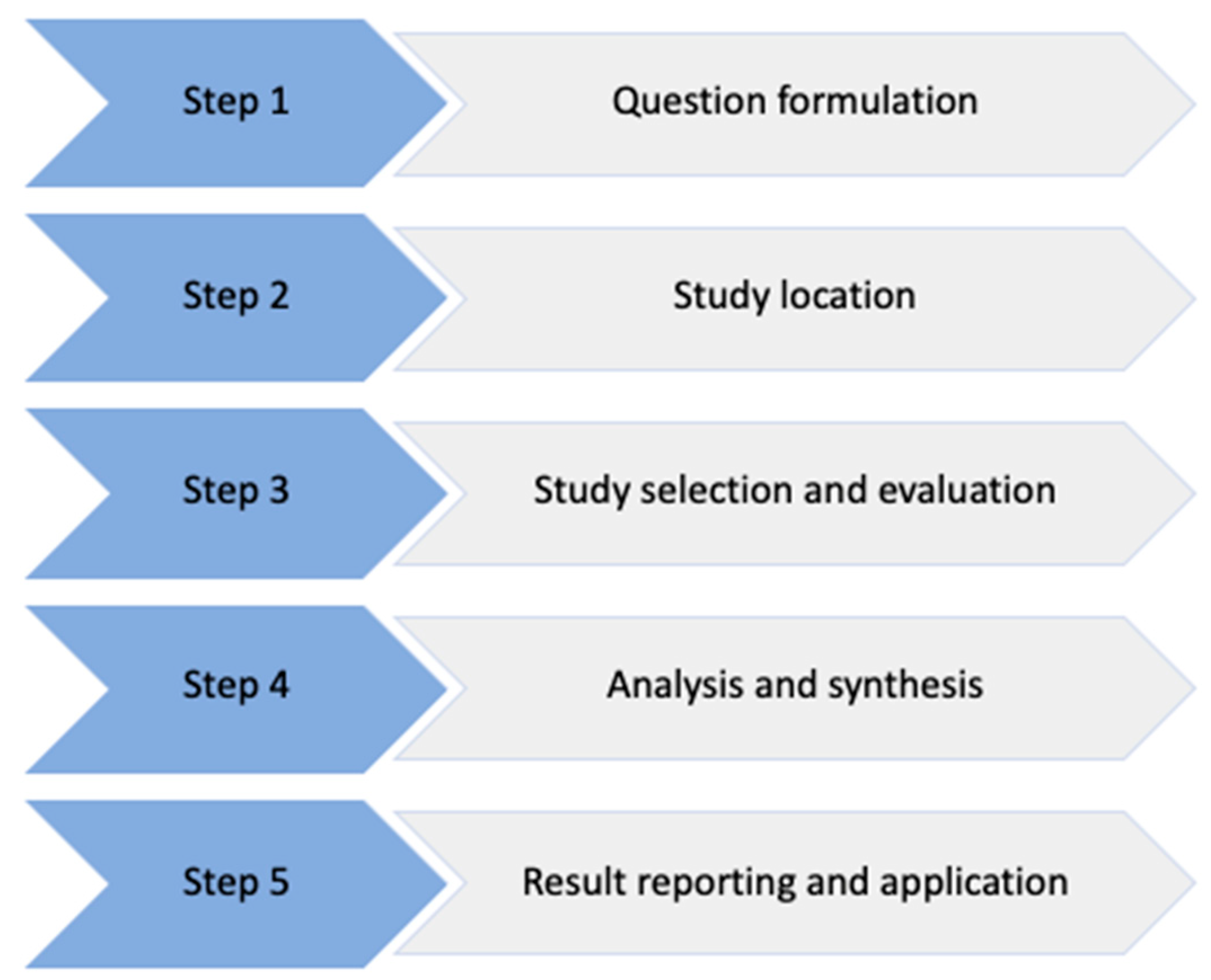
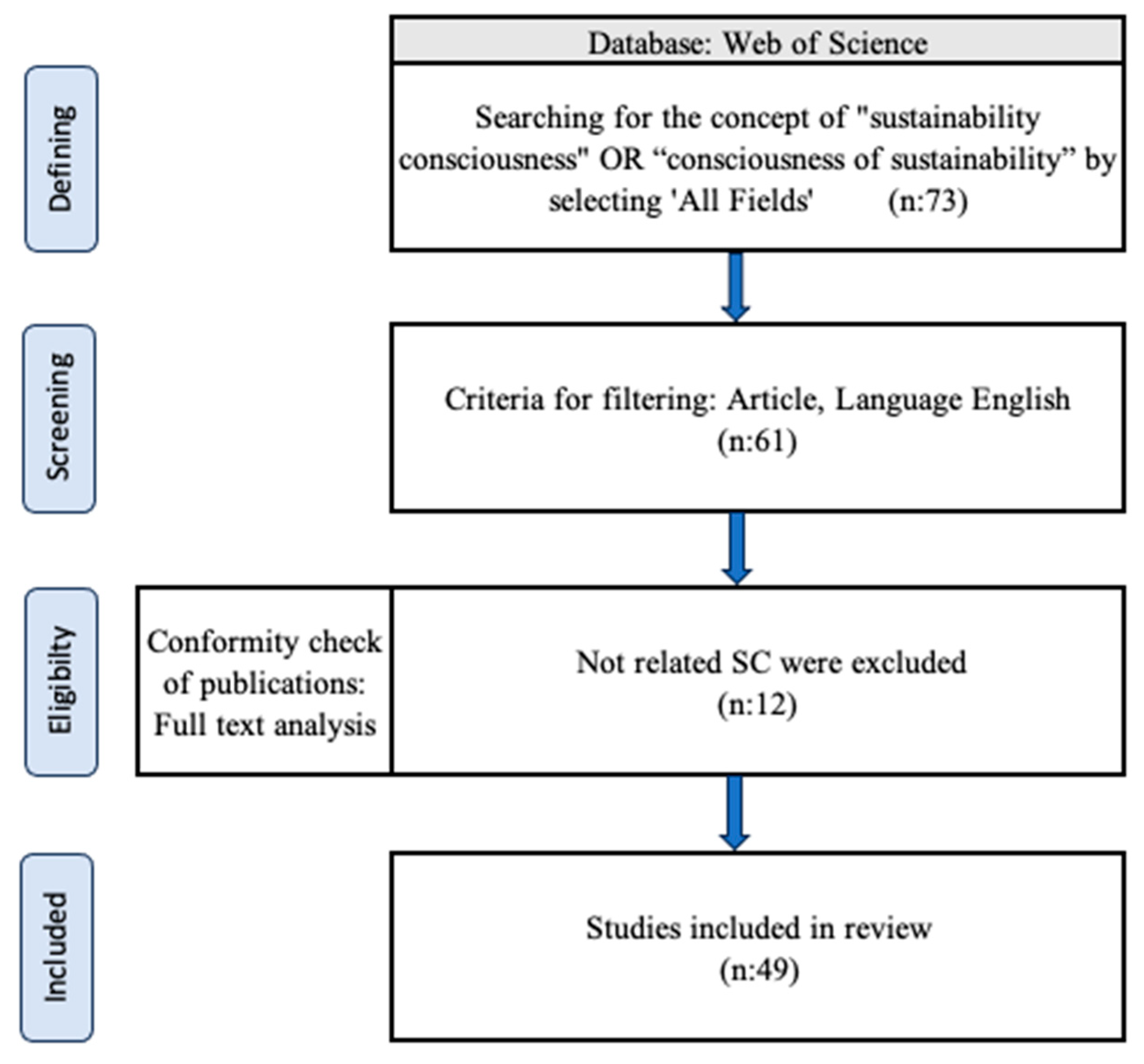
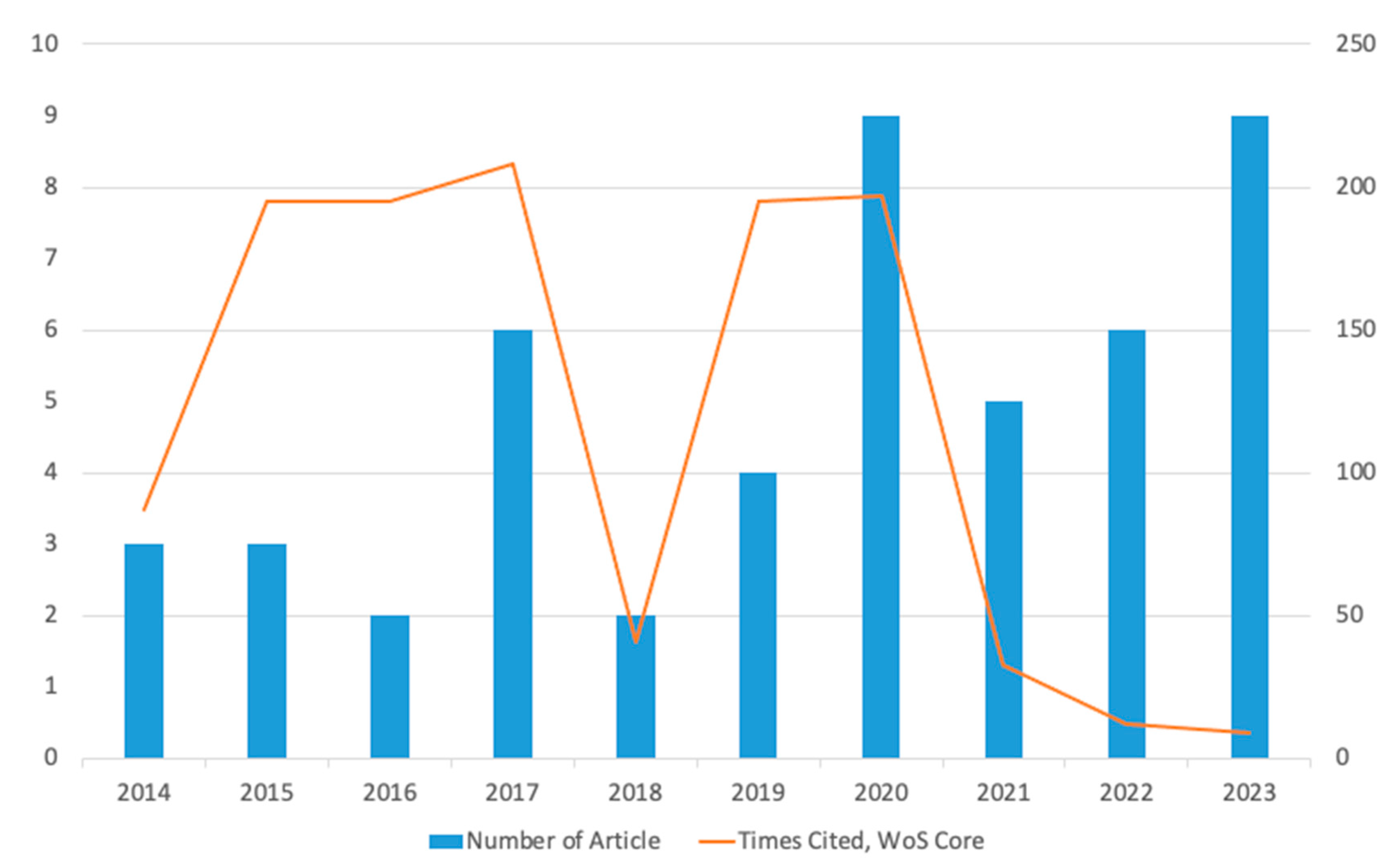


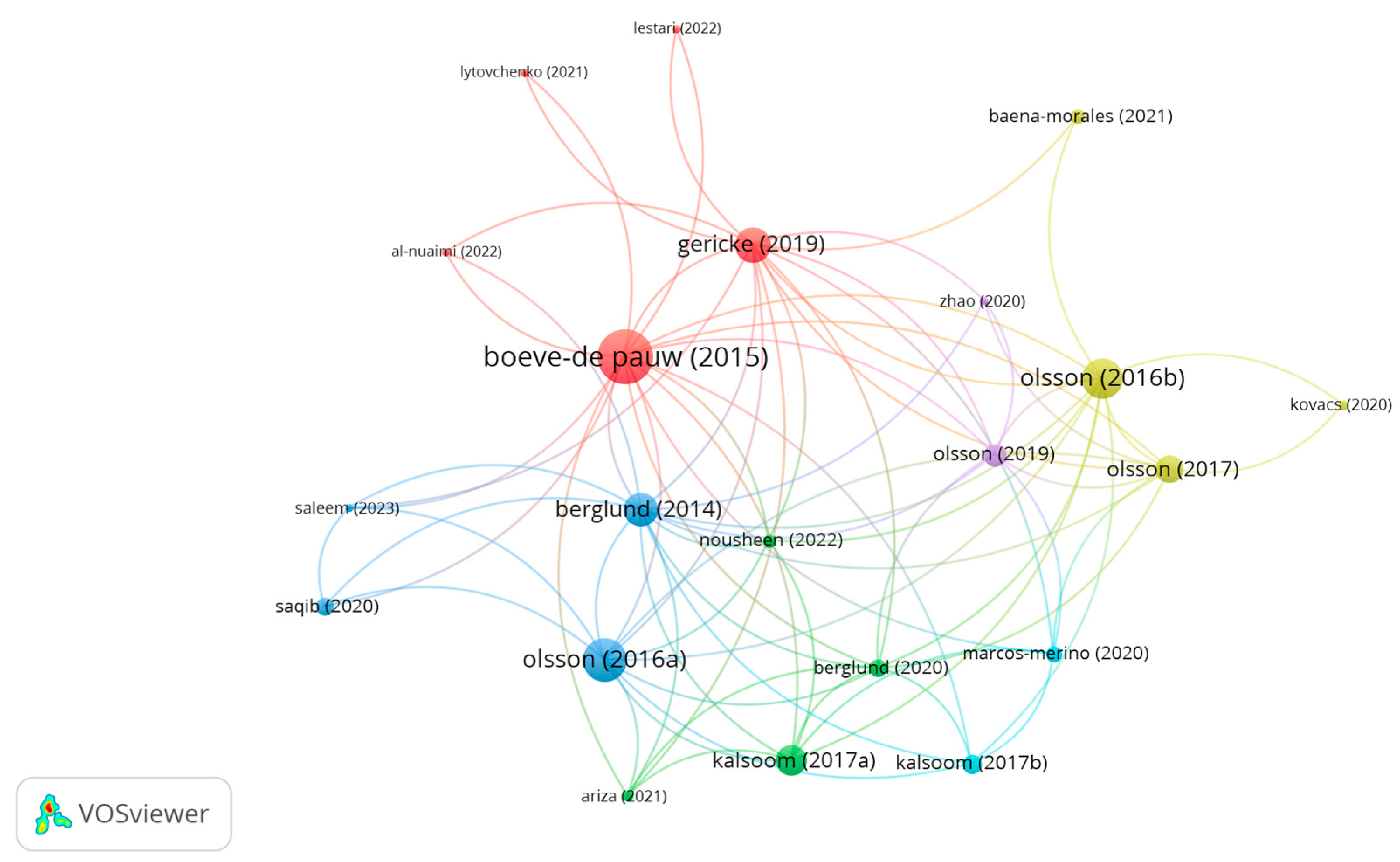
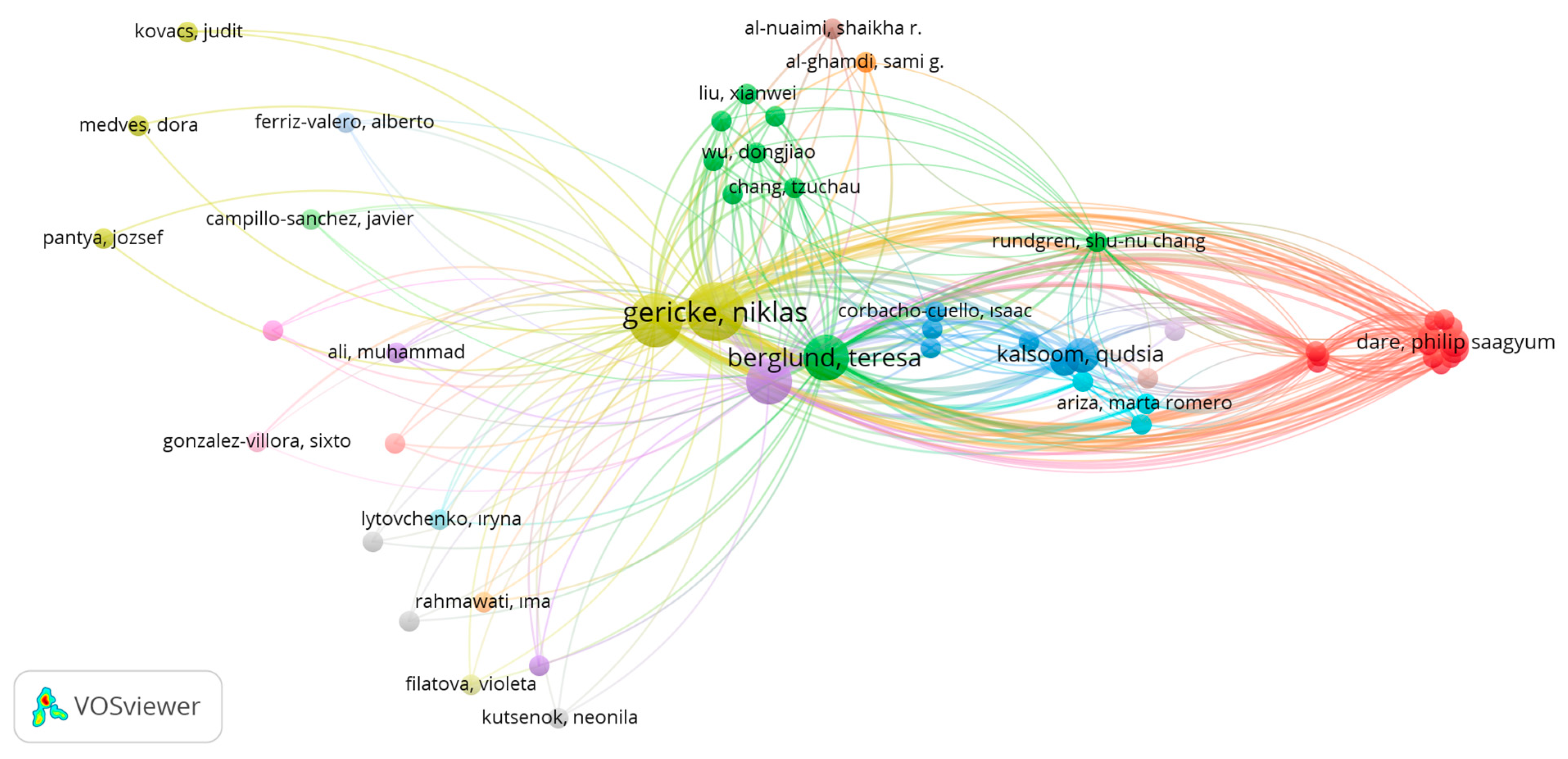
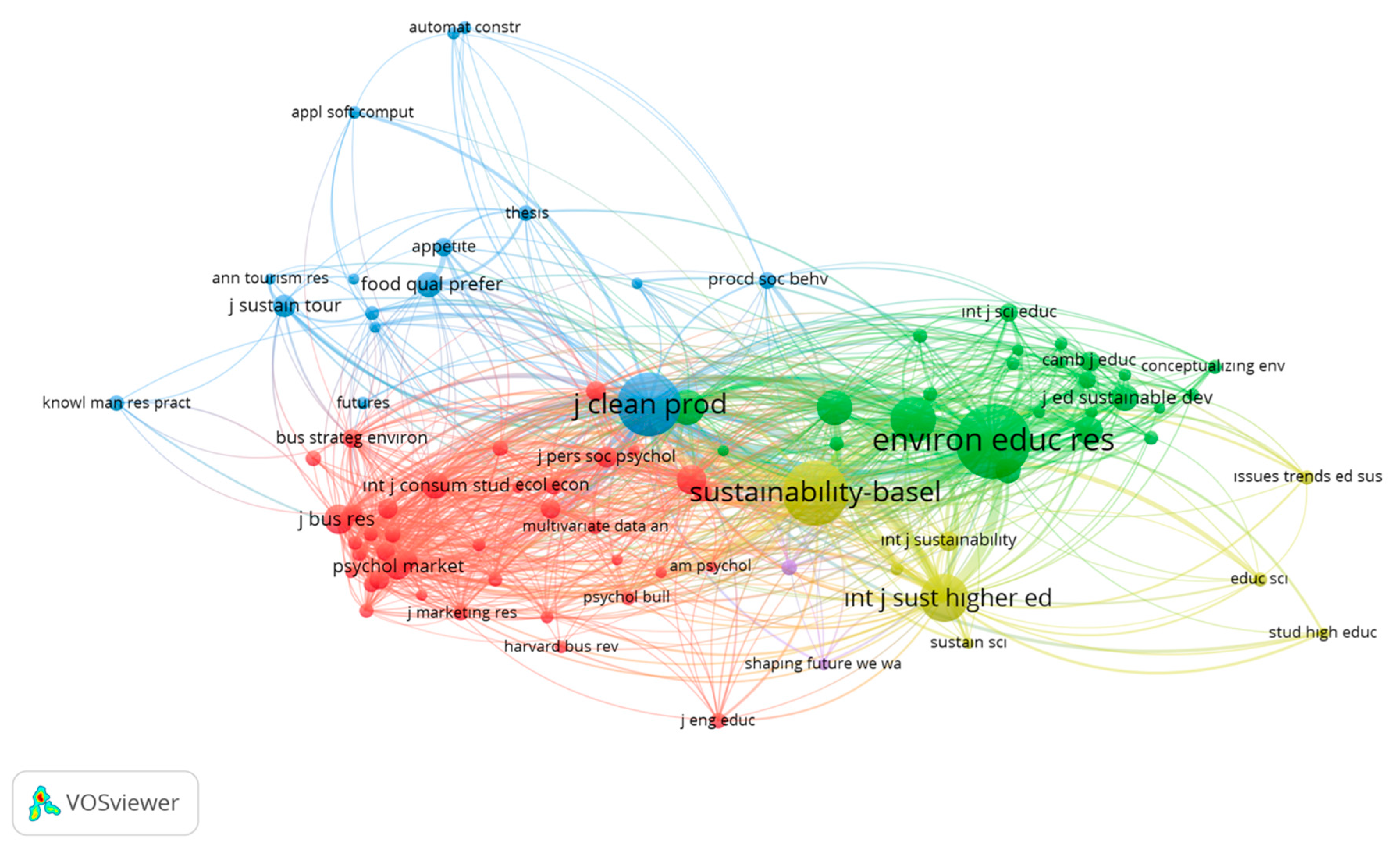

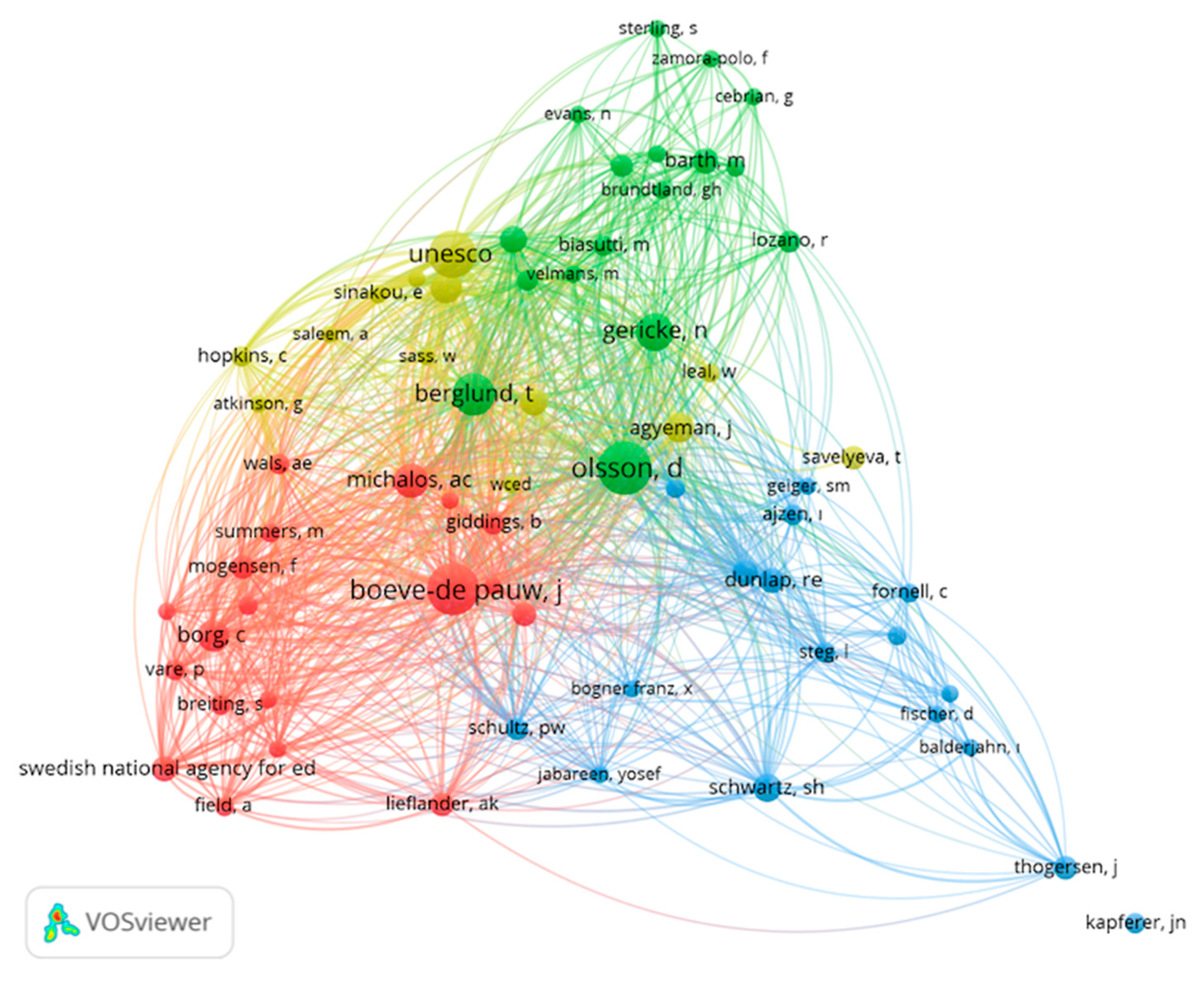



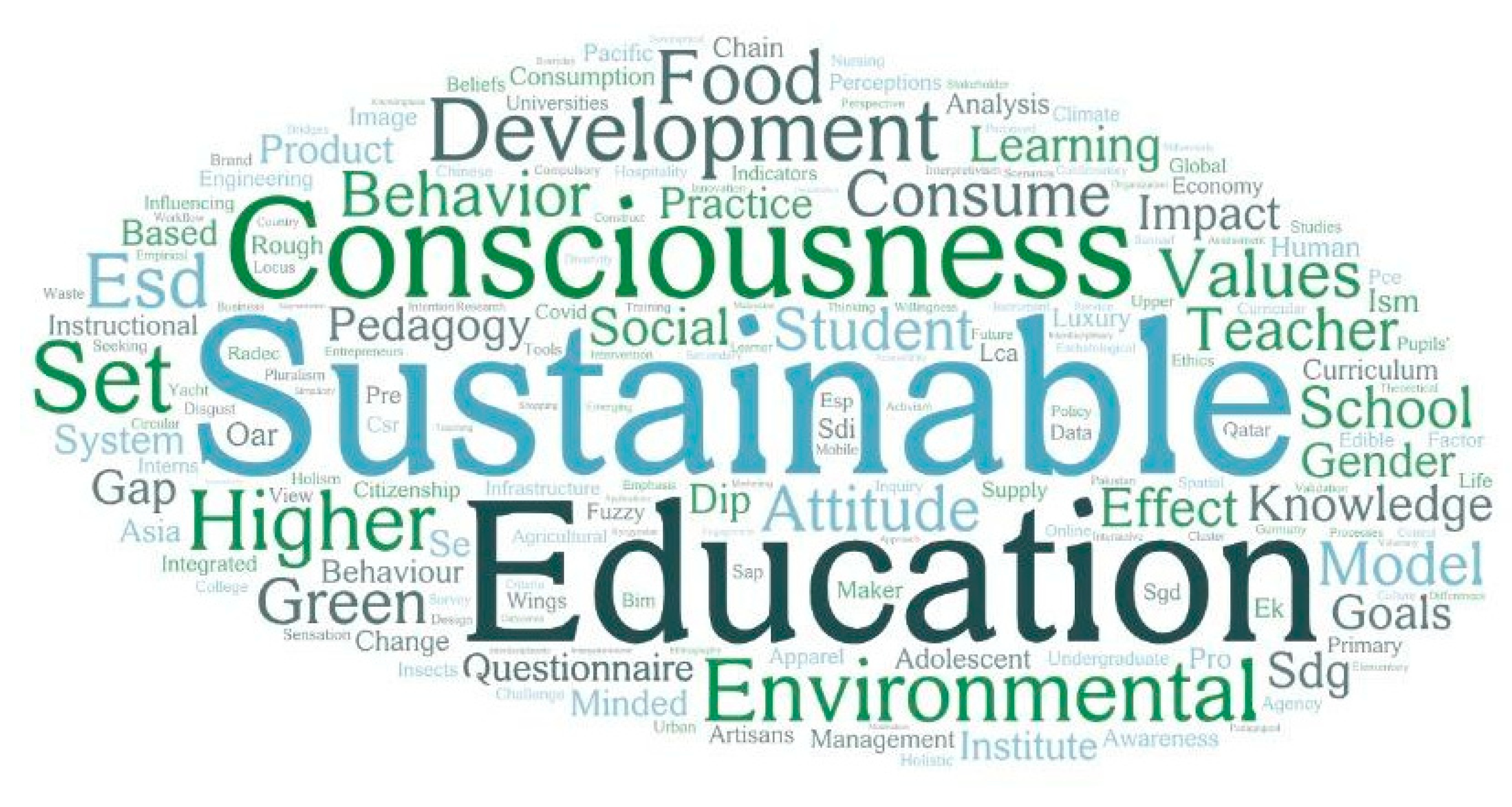
| Publisher | Number of Articles | % |
|---|---|---|
| Elsevier | 9 | 18.37 |
| MDPI | 9 | 18.37 |
| Taylor & Francis | 9 | 18.37 |
| Emerald Group Publishing | 8 | 16.32 |
| Springer Nature | 3 | 6.12 |
| Rank | Authors | Affiliation | Country | Total Citations | H-Index |
|---|---|---|---|---|---|
| 1 | Niklas Gericke | Karlstad University | Sweden | 487 | 23 |
| 2 | Daniel Olsson | Karlstad University | Sweden | 422 | 11 |
| 3 | Teresa Berglund | Karlstad University | Sweden | 344 | 8 |
| 4 | Jelle Boeve-de Pauw | University of Antwerp | Belgium | 287 | 19 |
| 5 | Patrik Lammers | University Osnabruck | Germany | 92 | 3 |
| 6 | Qudsia Kalsoom | University of Dundee | England | 84 | 5 |
| 7 | Jean Noel Kapferer | Northwestern University | France | 54 | 19 |
| 8 | Mathias Peyer | University of Potsdam | Germany | 49 | 7 |
| 9 | Carmen Jaca | University of Navarra | Spain | 37 | 16 |
| 10 | Maarten Albert Van Eldik | University of Twente | Netherlands | 28 | 1 |
| No | Title | Citation | Key Objective and Findings |
|---|---|---|---|
| 1 | The Effectiveness of Education for Sustainable Development | 165 | The article evaluates the extent to which education can be characterized as holistic and pluralistic from the perspective of ESD. Research results show that ESD has a major impact on student outcomes, particularly about SC. |
| 2 | The effect of implementation of education for sustainable development in Swedish compulsory schools—assessing pupils’ sustainability consciousness | 105 | The study compared the impact of the ESD approach on students in schools with and without ESD education. The results showed that schools with an ESD profile had a small positive effect on students’ SC. |
| 3 | Acceptance of insects as food in Germany: Is it about sensation seeking, sustainability consciousness, or food disgust? | 95 | This study examines the acceptance of insect-based foods by consumers in Germany. Despite the participants’ strong SC, SC was not a significant determinant of willingness to consume insects. |
| 4 | The adolescent dip in students’ sustainability consciousness—Implications for education for sustainable development | 93 | This study investigates students’ SC during the transition to adolescence. The results clearly demonstrate that Swedish students’ SC declines during adolescence and that sustainability education for adolescents needs to be modified. |
| 5 | The Sustainability Consciousness Questionnaire: The theoretical development and empirical validation of an evaluation instrument for stakeholders working with sustainable development | 78 | This article introduces the concept of SC, which is an individual’s experience and awareness of SD. A SCQ was developed theoretically and empirically. The SCQ scale was developed in two versions: long version (SCQ-L) and short (SCQ-S). |
| 6 | The implementation of education for sustainable development in Sweden: investigating the sustainability consciousness among upper secondary students | 65 | The aim of this article was to investigate the effects of ESD implementation in Sweden in terms of improving students’ SC. The results show that there are significant differences in terms of SC between students in schools providing education with the ESD approach and students in regular schools. Additionally, a significant difference was found in the underlying economic dimension of SC between the two groups of students. |
| 7 | Are millennials really more sensitive to sustainable luxury? A cross-generational international comparison of sustainability consciousness when buying luxury | 64 | The study investigates whether millennials are more sensitive to sustainable luxury. The research results revealed that the sensitivity of Generation Y regarding the sustainability of luxury brands when purchasing luxury is not much different from that of other generations. |
| 8 | Inquiry into sustainability issues by preservice teachers: A pedagogy to enhance sustainability consciousness | 54 | The study used action research to improve pre-service teachers’ SC through inquiry-based learning. The data showed that preservice teachers’ empirical examination of sustainability issues and research-based discussions improved preservice teachers’ SC. |
| 9 | The role of sustainability in profiling voluntary simplifiers | 50 | This study, which investigates the sustainable purchasing intentions of minimalists, aims to create a multidimensional sustainability profile for minimalists. The results revealed that minimalists purchased more green products, and exhibited greater environmental and economic SC. |
| 10 | The effect of gender on students’ sustainability consciousness: A nationwide Swedish study | 45 | This study extends previous environmental education research on gender differences by investigating the gender difference between boys’ and girls’ SC. The findings revealed a gender difference in students’ SC. The gender gap increases across the age range and becomes even larger in ESD-focused schools. |
Disclaimer/Publisher’s Note: The statements, opinions and data contained in all publications are solely those of the individual author(s) and contributor(s) and not of MDPI and/or the editor(s). MDPI and/or the editor(s) disclaim responsibility for any injury to people or property resulting from any ideas, methods, instructions or products referred to in the content. |
© 2023 by the authors. Licensee MDPI, Basel, Switzerland. This article is an open access article distributed under the terms and conditions of the Creative Commons Attribution (CC BY) license (https://creativecommons.org/licenses/by/4.0/).
Share and Cite
Gulzar, Y.; Eksili, N.; Caylak, P.C.; Mir, M.S. Sustainability Consciousness Research Trends: A Bibliometric Analysis. Sustainability 2023, 15, 16773. https://doi.org/10.3390/su152416773
Gulzar Y, Eksili N, Caylak PC, Mir MS. Sustainability Consciousness Research Trends: A Bibliometric Analysis. Sustainability. 2023; 15(24):16773. https://doi.org/10.3390/su152416773
Chicago/Turabian StyleGulzar, Yonis, Nisa Eksili, Pınar Celik Caylak, and Mohammad Shuaib Mir. 2023. "Sustainability Consciousness Research Trends: A Bibliometric Analysis" Sustainability 15, no. 24: 16773. https://doi.org/10.3390/su152416773
APA StyleGulzar, Y., Eksili, N., Caylak, P. C., & Mir, M. S. (2023). Sustainability Consciousness Research Trends: A Bibliometric Analysis. Sustainability, 15(24), 16773. https://doi.org/10.3390/su152416773









